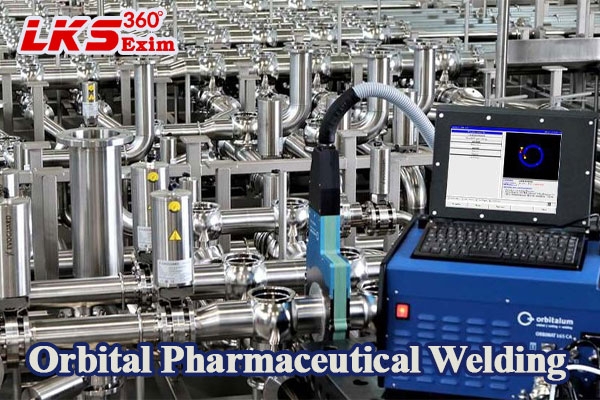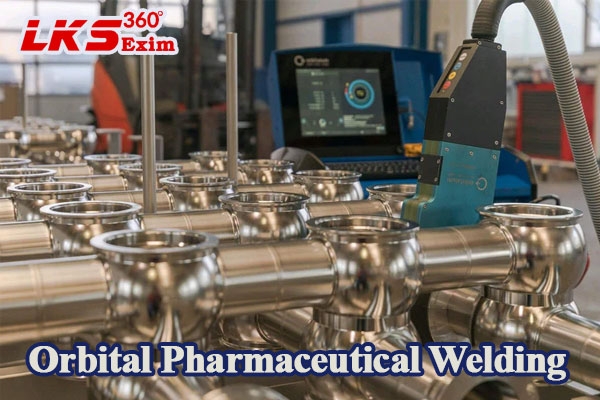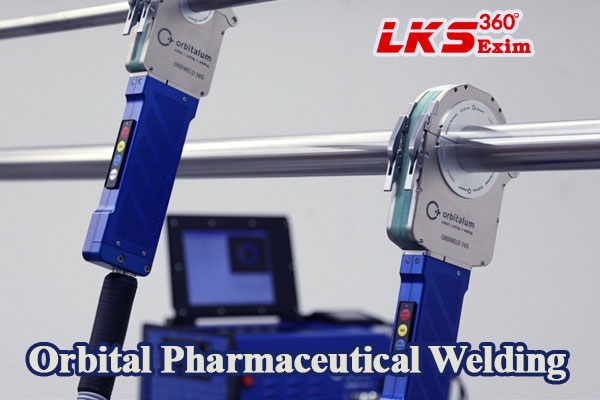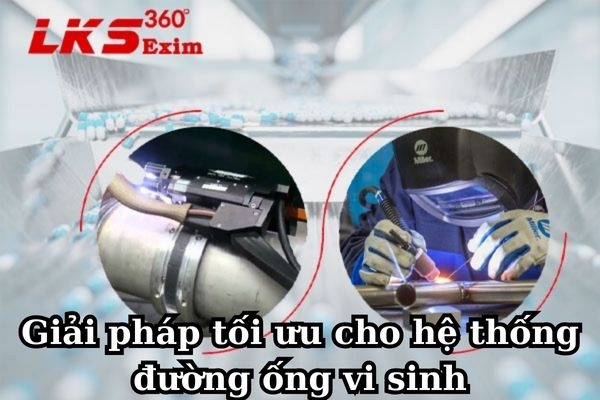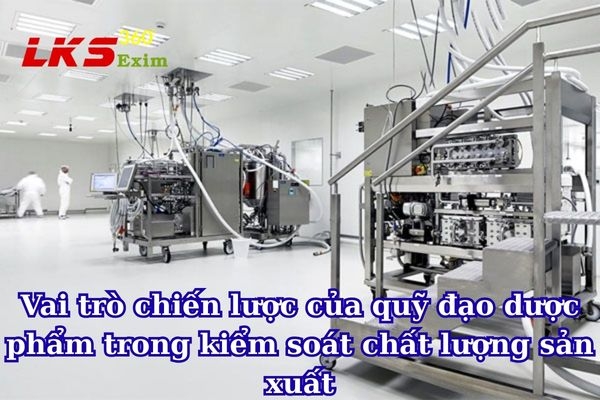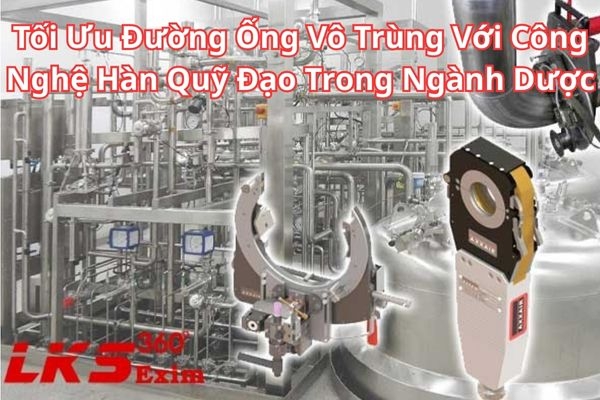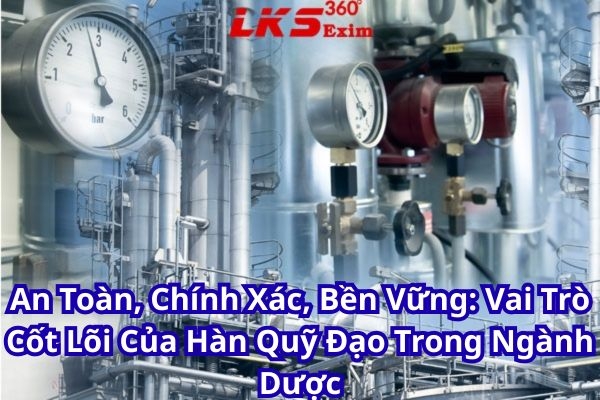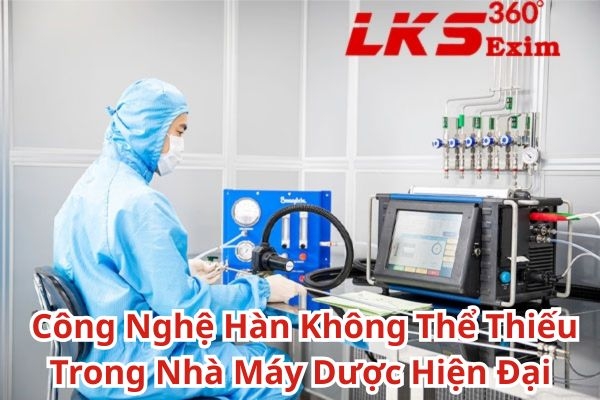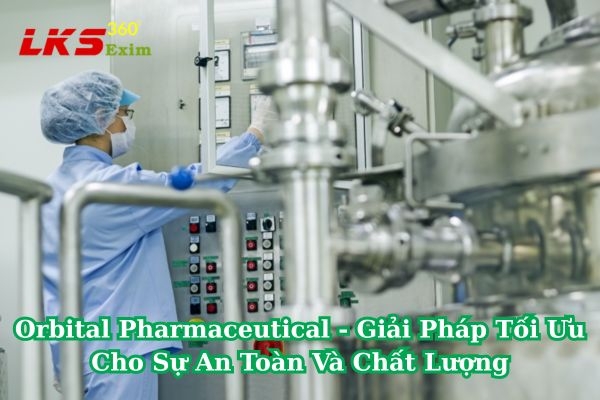Blog
Orbital Welding For Pharmaceutical Tubing ( Orbital Pharmaceutical)
Orbital Pharmaceutical welding is a specialized welding technique that has gained popularity in various industries, including the pharmaceutical industry. It involves the use of an automated system to perform precise and consistent welds on tubing and pipes. This method offers numerous benefits, such as improved quality and efficiency, making it a preferred choice for pharmaceutical projects. In this LKS 360 EXim's post, we will delve into the world of orbital welding for pharmaceutical tubing, exploring its benefits, challenges, and cost analysis compared to traditional welding methods.
Introduction to Orbital Pharmaceutical Welding
Pharmaceutical companies are constantly striving to improve their manufacturing processes to meet the ever-increasing demand for high-quality products. One crucial aspect of pharmaceutical production is the welding of tubing and pipes used in the transportation of liquids and gases. These tubes and pipes must be welded with precision and accuracy to ensure the integrity of the final product. This is where orbital Pharmaceutical welding comes into play.
Orbital Pharmaceutical welding is a highly specialized welding process that uses a computer-controlled system to perform welds on tubing and pipes. The system rotates the welding electrode around the workpiece, creating a consistent and uniform weld. This method eliminates the need for manual welding, reducing the risk of human error and ensuring consistent quality throughout the project.
Benefits of Using Orbital Welding in the Pharmaceutical (Orbital Pharmaceutical welding) Industry
The use of Orbital Pharmaceutical welding offers several advantages over traditional welding methods. Let's take a closer look at some of these benefits:
Improved Quality and Consistency
In the pharmaceutical industry, quality is of utmost importance. Any defects or inconsistencies in the welding process can compromise the integrity of the final product, leading to potential health hazards for consumers. Orbital Pharmaceutical welding ensures precise and consistent welds, eliminating the risk of human error and producing high-quality welds every time. This results in a more reliable and safer end product.
Increased Efficiency
Orbital welding is a highly efficient process that can significantly reduce the time and labor required for welding. The automated system can perform welds at a much faster rate than manual welding, increasing productivity and reducing project timelines. This is especially beneficial for pharmaceutical companies that have strict deadlines to meet.
Reduced Contamination Risks
In the pharmaceutical industry, cleanliness and hygiene are critical. Traditional welding methods, such as TIG or MIG welding, produce a significant amount of heat and sparks, which can lead to contamination of the workpiece. Orbital Pharmaceutical welding, on the other hand, uses a non-contact welding method, minimizing the risk of contamination and ensuring a clean and sterile environment for pharmaceutical production.
Common Challenges in Orbital Welding for Pharmaceutical Projects
While orbital welding offers numerous benefits, it also comes with its own set of challenges, especially when used in the pharmaceutical industry. Let's take a look at some of the common challenges faced in orbital welding for pharmaceutical projects:
Material Compatibility
Pharmaceutical tubing and pipes are often made from specialized materials, such as stainless steel or titanium, to ensure the purity and integrity of the final product. These materials can be challenging to weld using traditional methods, and the same applies to orbital welding. The automated system must be programmed to handle the specific material properties to produce high-quality welds.
Welding in Tight Spaces
Pharmaceutical production facilities often have limited space, making it challenging to maneuver large welding equipment. Orbital Pharmaceutical welding systems can be bulky and require a significant amount of space to operate. This can be a challenge when working in confined areas, making it difficult to access and weld certain sections of the tubing or pipes.
Cost of Equipment and Training
The initial cost of investing in an orbital welding system can be quite high, making it a significant barrier for smaller pharmaceutical companies. Additionally, the training required to operate the system effectively can also be costly and time-consuming. This can be a challenge for companies with limited budgets and resources.
=> See more articles on the same topic at:
=> Tips To Avoid a Lack of Fusion in Orbital Welding in pharmaceutical (Orbital pharmaceutical)
=> Orbital welding standards in the pharmaceutical industry (Orbital pharmaceutical)
Cost Analysis of Orbital Welding vs Traditional Welding Methods in Pharmaceuticals
When considering the use of orbital welding in pharmaceutical projects, it is essential to conduct a cost analysis to determine its feasibility. Let's compare the costs of Orbital Pharmaceutical welding with traditional welding methods to understand the financial implications of using this technique.
Initial Investment
The initial investment for an orbital welding system can range from $20,000 to $100,000, depending on the size and capabilities of the equipment. On the other hand, traditional welding equipment, such as TIG or MIG welders, can cost anywhere from $1,000 to $10,000. This significant difference in cost can be a deterrent for smaller pharmaceutical companies looking to invest in orbital welding.
Labor Costs
One of the main advantages of Orbital Pharmaceutical welding is its ability to reduce labor costs. With traditional welding methods, multiple welders are required to complete a project, leading to higher labor costs. In contrast, orbital welding only requires one operator to oversee the automated system, reducing the number of labor hours needed and ultimately cutting down on labor costs.
Time Savings
Orbital welding is a much faster process compared to traditional welding methods. The automated system can perform welds at a rate of 4-5 times faster than manual welding, resulting in significant time savings. This can be especially beneficial for pharmaceutical companies that have strict deadlines to meet.
Maintenance and Repair Costs
Traditional welding equipment requires regular maintenance and repairs, which can add up over time. On the other hand, orbital welding systems have minimal maintenance requirements, resulting in lower maintenance costs. Additionally, the consistent and precise welds produced by orbital welding reduce the need for repairs, further reducing costs in the long run.
Conclusion
In conclusion, Orbital Pharmaceutical welding has proven to be a valuable technique, offering numerous benefits such as improved quality, increased efficiency, and reduced contamination risks. However, it also comes with its own set of challenges, including material compatibility and high initial costs. When considering the use of orbital welding for pharmaceutical projects, it is essential to conduct a cost analysis to determine its feasibility. While the initial investment may be higher, the long-term benefits of using orbital welding can outweigh the costs, making it a worthwhile investment for pharmaceutical companies looking to improve their manufacturing processes. Contact LKS 360 EXim if you need more detailed information about setting up orbital pharmaceutical welding systems, buying or renting orbital welding machines, pipeline construction solutions,...
LKS 360 Import Export Trading Service Co., Ltd
Hotline: 02866.503.603
Website: lks360exim.com
Blog


